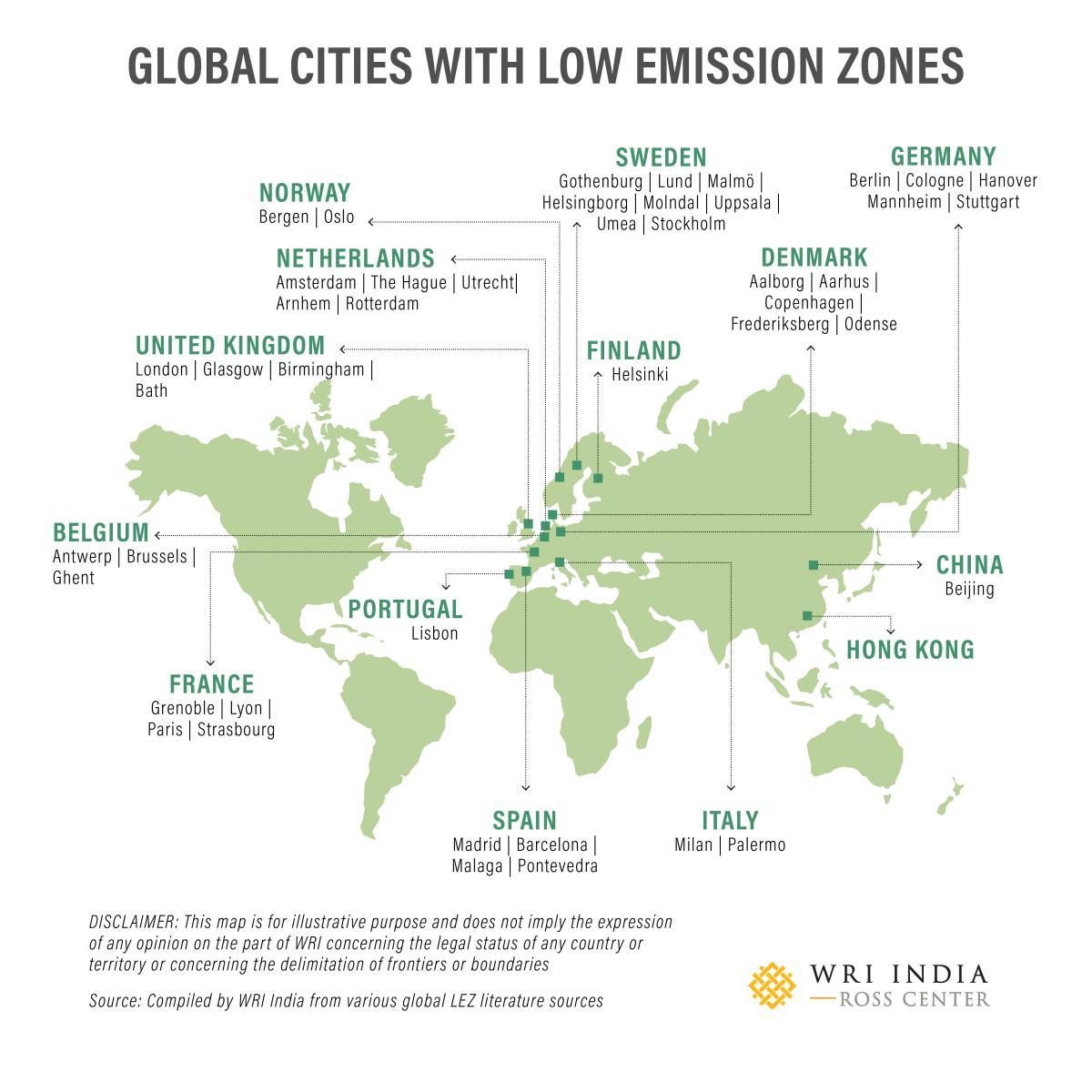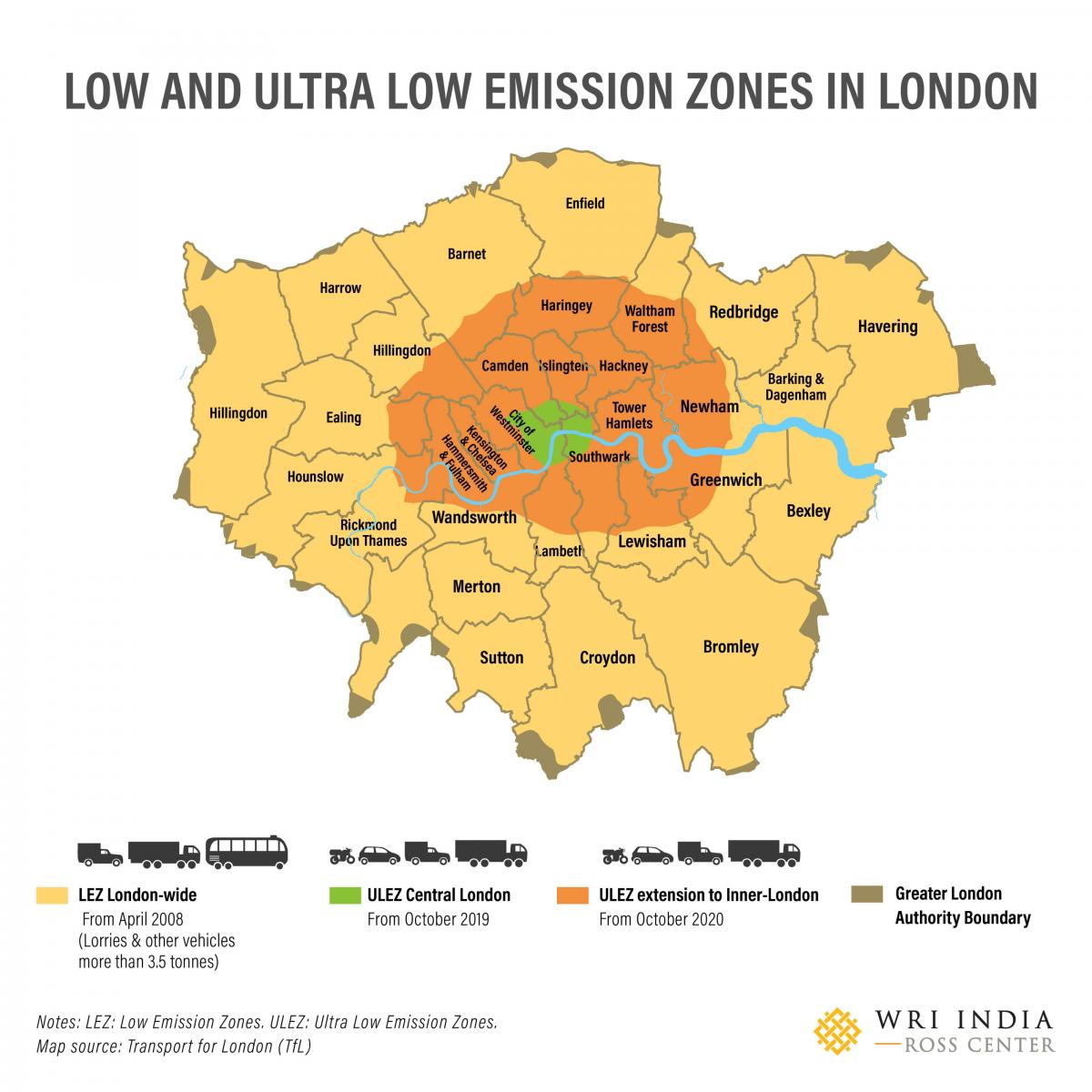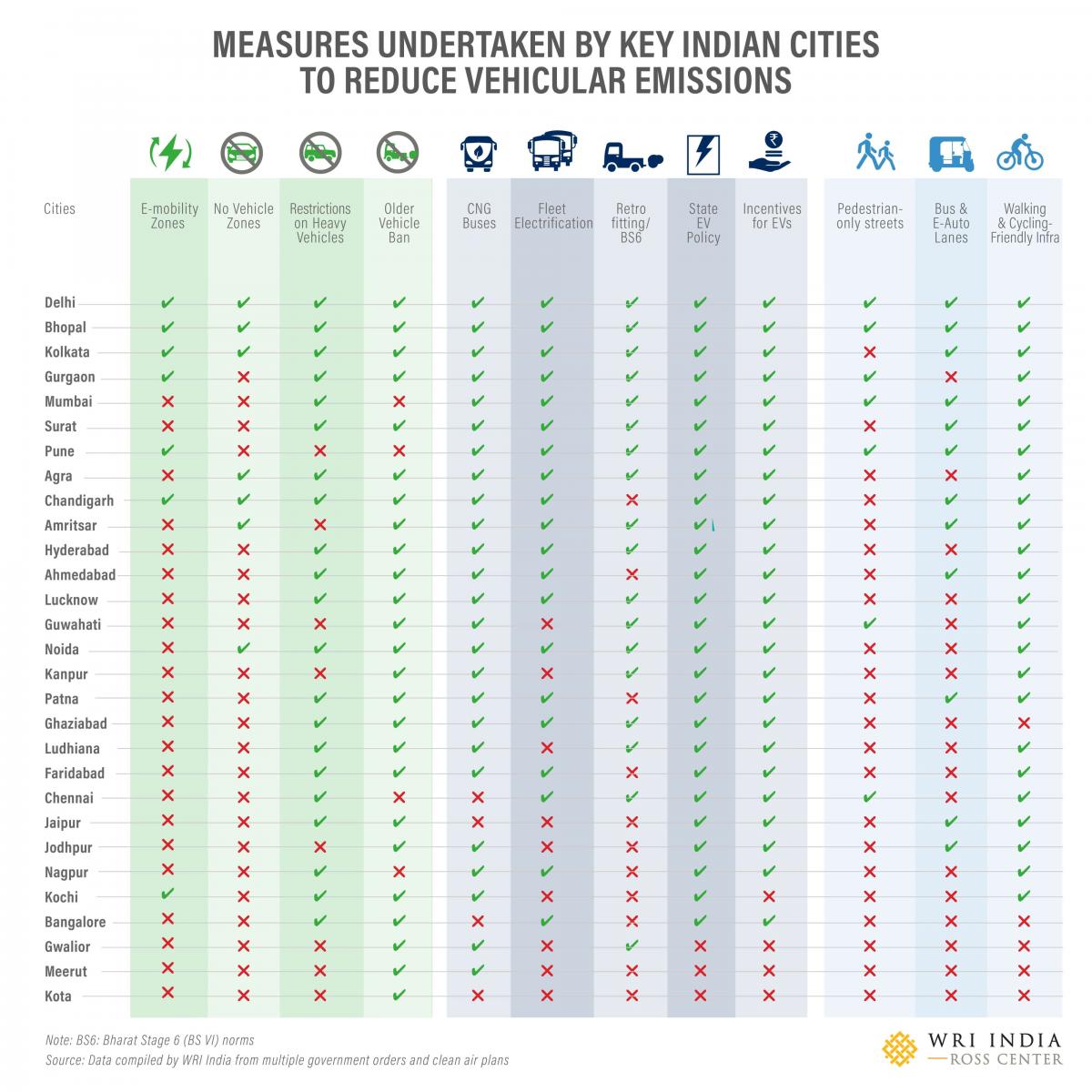
Are Low-Emission Zones the Answer to Urban India’s Air Pollution Woes?
This is the first blog in our three-part series on the importance of implementing low-emission zones (LEZs) across Indian cities.
As the national capital grapples with the annual phenomenon of deteriorating air quality at the onset of winter, the Commission for Air Quality Management (CAQM) has announced the imposition of Stage-II measures under the Graded Response Action Plan (GRAP) to address the issue. The implementation of Green Zones, with restrictions on Internal Combustion Engine (ICE) vehicles, is an effective way to improve the air quality in Indian cities like Delhi. Electric vehicle (EV) policies of states like Maharashtra, Andhra Pradesh, Uttar Pradesh and Punjab have proposed the implementation of Green Zones. In this blog, we delve deeper into the concept of Green Zones and how they can benefit our cities.
What Are Green Zones?
Green Zones, or Low-Emission Zones (LEZs), are areas of the city that either restrict or ban the movement of ICE vehicles. The primary goal of LEZs is to reduce the pollution caused by tailpipe emissions. This can be done by incentivizing EV usage and disincentivizing the movement of polluting diesel/petrol vehicles through measures such as entry restrictions and emission fines. LEZs also need to be supported with improvements in public transit systems and dedicated infrastructure for Non-Motorized Transport (NMT) that encourages walking and cycling. Well-planned LEZs offer multiple benefits, including improved air quality, accelerated transition to low/zero emission vehicles, and increased use of public and active transportation. Several cities across the globe have implemented LEZs to reduce tailpipe emissions (see figure below).

Several global examples have demonstrated the effectiveness of LEZs. London is a prime example with an active LEZ since 2008, which targets lorries of older emission standards through emission pricing. London has also implemented an Ultra Low Emission Zone (ULEZ), with charges levied on all motor vehicles that do not meet minimum Euro emission standards set for each vehicle segment. Within the first six months of the introduction of the ULEZ in 2019, London observed a reduction in nitrogen oxide(s) and carbon dioxide emissions from road transport by 31 percent and 4 percent, respectively.

Status of Green Zones in Urban India
While LEZs have been implemented successfully in cities like London, Berlin, Amsterdam and Beijing, they haven’t seen a widespread uptake in India. Zero-Emission Zones (ZEZs), with a complete ban on ICE vehicles, have been implemented in and around a few tourist areas, such as the Taj Mahal in Agra, the Statue of Unity in Kevadia, and the ecologically sensitive hill station of Matheran. While Agra and Kevadia only ban polluting vehicles, Matheran prohibits the entry of all motor vehicles.
Indian cities are also implementing different measures to tackle congestion and vehicular emissions. The National Clean Air Program (NCAP) identified 122 cities that do not meet the national Air Quality Index (AQI) standards. These include major cities like Delhi, Mumbai, Bengaluru, Hyderabad, Pune and Kolkata. In response, cities have implemented a range of measures — vehicle restrictions, cleaner fuel alternatives, and infrastructure development to encourage the uptake of public transportation, walking, and cycling — as part of their clean air action plans.
Vehicle restriction measures restrict the movement of vehicles in a defined area. These include entry restrictions on heavy and older vehicles and re-registration bans on older vehicles. Delhi, Mumbai, Bengaluru, Hyderabad and Pune, among others, restrict heavy vehicles during peak hours to tackle congestion. Areas with these restrictions can be classified as LEZs, though the term has not been used in Indian cities. With Delhi’s AQI deteriorating to 'severe' levels, entry restrictions on trucks (except trucks carrying essential commodities) were imposed between the 3rd and 6th of November 2022 (as part of stage IV measures of GRAP). Delhi also banned medium and heavy diesel goods vehicles in the city during this period.
Cleaner fuel measures have been at the forefront of clean air plans in Indian cities since the 1990s. These include transitioning public transport to zero-emission electric transport, retrofitting incentives for taxis and auto-rickshaws, mandatory enforcement of Pollution Under Control (PUC) certificates, and incentivizing EV purchases. These measures to accelerate the transition to cleaner fuels complement LEZs and contribute significantly to the reduction of transport emissions.
Infrastructure development measures for public and active transportation can support LEZs by providing alternative and clean modes of transport. Multiple cities have either planned or implemented the pedestrianization of market streets. Some cities have also deployed dedicated NMT infrastructure, which includes exclusive bicycle lanes and pedestrian walkways to incentivize non-motorized transportation. Chandni Chowk – a busy market area in Delhi – effectively demonstrates how pedestrianization can support active and sustainable transportation.

These measures, while effective, have had limited implementation and are often applied temporarily. For instance, restrictions on heavy vehicles are only applicable during peak hours or as an emergency measure when a city’s air quality breaches a certain threshold. As we move towards stricter emission norms, older vehicles still account for most of the Particulate Matter (PM) emissions in the road transport sector. For perspective, Bharat Stage-II (BS-II) commercial vehicles in Mumbai contributed to ~73 percent of PM emissions from commercial vehicles in 2021, despite accounting for only 35 percent of the commercial fleet (Vikrant Bhalerao et al., Maharashtra Pollution Control Board, 2021).
LEZs can incentivize the uptake of cleaner forms of transport and reduce local air pollution exposure, especially for vulnerable groups. With multiple state EV policies proposing Green Zones, a golden opportunity exists for cities to develop their transport networks for reduced emissions and cleaner, healthier urban environments.
Kaustubh Gosavi is a consultant with the Electric Mobility team at WRI India.